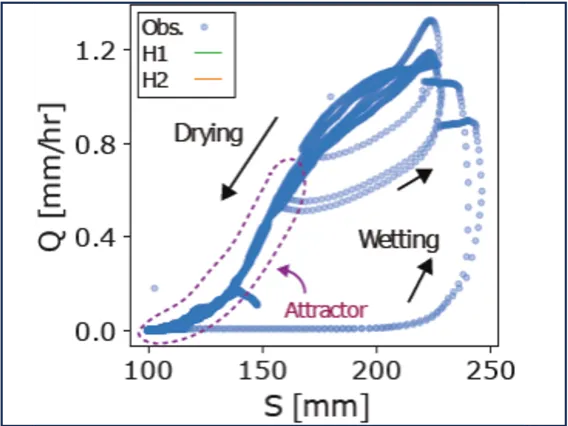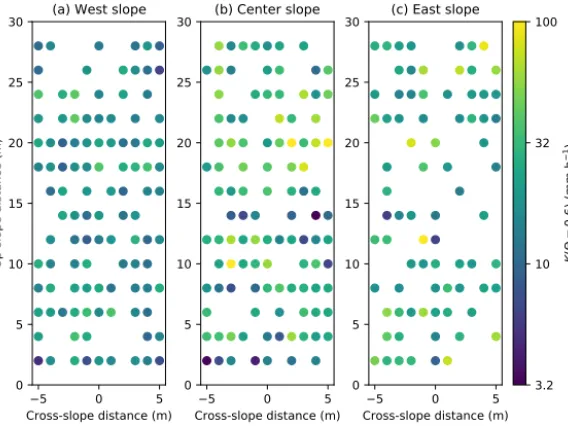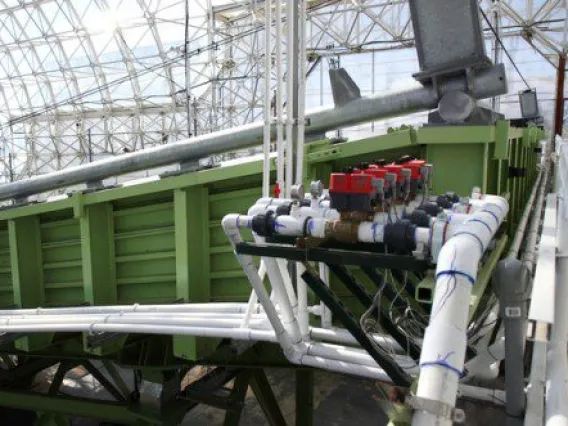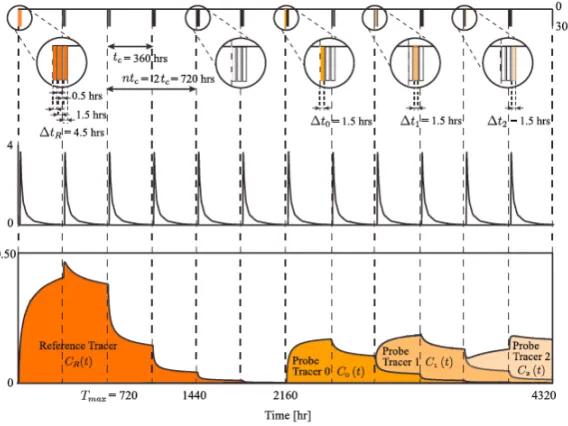Hillslope Scale Processes
Hillslope scale refers to areas of study on the order of 101-103 meters.
Our investigations at the hillslope scale include:
- Process-based modeling
- System-scale observations
- World's largest lysimeters (LEO)
- Semi-controlled experimentation
Current Research Projects

System-scale signatures
Because of LEO's measurement capabilities, we can directly observe system-scale signatures, such as storage-discharge relationships and aged-ranked storage selection functions.
Recently Completed Research Projects

Gravity Flow Experiments
Hannes Bauser (former postdoc) designed and executed gravity flow experiments to estimate spatial variability of soil material properties

Random Forcing Experiments
Kim and Troch (2020) developed a data based method to directly estimate time variable transit time distributions. The method can be applied with observed rainfall-runoff data from natural catchments.

Periodic Tracers Hierarchy (PERTH) Experiments
Minseok Kim (former postdoc) performed a 28-day PERTH experiment on all 3 LEO hillslopes simultaneously to collect data to observe transit time distributions

